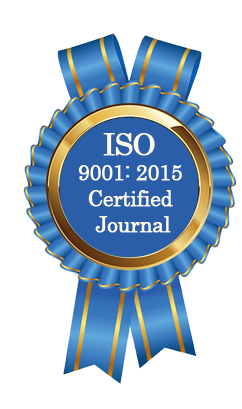| All | Since 2020 | |
| Citation | 105 | 60 |
| h-index | 4 | 4 |
| i10-index | 3 | 2 |
WJAHR Citation 
Login
News & Updation
Best Article Awards
World Journal of Advance Healthcare Research (WJAHR) is giving Best Article Award in every Issue for Best Article and Issue Certificate of Appreciation to the Authors to promote research activity of scholar.
Best Article of current issue
Download Article : Click here
Indexing
Abstract
COMPARISON STUDY OF HEMODYNAMIC STABILITY, EFFECT AND COMPLICATION OF UNILATERAL SPINAL ANESTHESIA AND CONVENTIONAL SPINAL ANESTHESIA IN LOWER LIMB SURGERY
Dr. Samara Awad Kadhim*, Dr. Usama H. Al Hassani and Dr. Marwa Adel Kareem
ABSTRACT
Background: Unilateral spinal anesthesia is an anesthetic technique in which the block of the sensory, motor and sympathetic function affected one side of the body, offers the advantage of the conventional spinal anesthesia with less side effect and coast. Aim of the study. Comparison of the hemodynamic stability, complication and effect of the unilateral and conventional spinal anesthesia. Method: Two groups of patients randomly selected, each one consists of 30 patients ASAI and ASAII, who had been admitted to have a lower limb surgery. Group (C) had a conventional spinal anesthesia which performed by administration of 2.5ml of hyperbaric bupivacaine 0.5% with 25G spinal needle, the patient in a setting position and after induction placed in a supine position. Group(U) had a unilateral spinal anesthesia by 1.5ml of hyperbaric bupivacaine 0.5% with 25G spinal needle, the position was lateral decubitus position with the target limb is downward, the duration of that position was 20 min then turned to the supine position. Result: The demographic data was similar between the two groups, Group (U) had less decrease in mean arterial pressure and pulse rate during the operation than group (C). The complications of spinal anesthesia (nausea, vomiting, headache and shivering) and need for vasopressor was significantly less in group (U), The time to the onset of sensory and motor block was shorter in the (C) group. Conclusion: Unilateral spinal anesthesia with a low dose (7.5 mg), limited Volume (1.5 cm3) technique, had more hemodynamic stability criteria, Induces sufficient sensory and motor block with an appropriate level of analgesia, less complication incidence and less need for vasopressor use. The technique is therefore suitable for lower-limb surgery. This technique achieves stable hemodynamics, particularly in elderly and ASA class III/IV patients. It also results in rapid recovery and greater, in addition to preventing unnecessary nerve block in the contra lateral limb, And low-cost need.
[Full Text Article] [Download Certificate]
